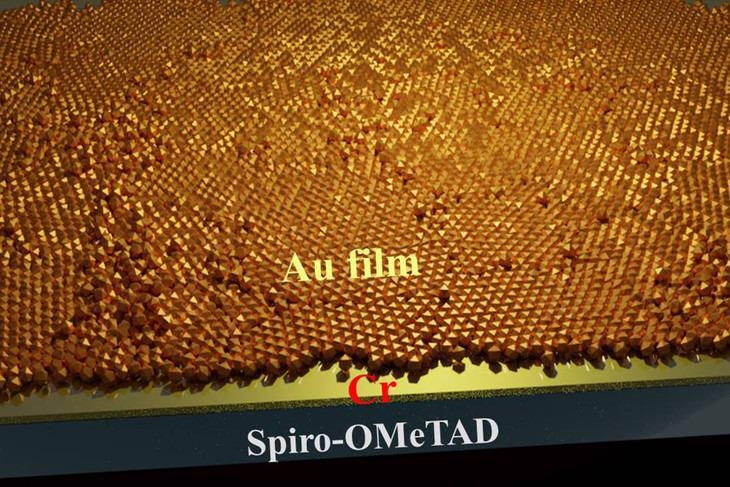May 31 2021
According to an international team of researchers, designing new ultrathin metal electrodes has enabled scientists to make semitransparent perovskite solar cells that are highly effective and can be paired with conventional silicon cells to considerably increase the performance of both devices.

Scientists found using a chromium seed layer allowed them to grow ultrathin gold film that serves as a transparent electrode with good conductivity for perovskite solar cells. Image Credit: Penn State.
The study represents a step toward developing entirely transparent solar cells.
Transparent solar cells could someday find a place on windows in homes and office buildings, generating electricity from sunlight that would otherwise be wasted. This is a big step — we finally succeeded in making efficient, semitransparent solar cells.
Kai Wang, Study Co-Author and Assistant Research Professor of Materials Science and Engineering, Penn State
Although conventional solar cells are made from silicon, researchers think they are nearing the limits of the technology in the path toward creating ever more effective solar cells. Perovskite cells are a potential alternative and accumulating them on top of the conventional cells makes more efficient tandem devices, stated the researchers.
We’ve shown we can make electrodes from a very thin, almost few atomic layers of gold. The thin gold layer has high electrical conductivity and at the same time it doesn’t interfere with the cell’s ability to absorb sunlight.
Shashank Priya, Associate Vice President for Research and Professor of Materials Science and Engineering, Penn State
The group developed a perovskite solar cell that acquired an efficiency of 19.8%, a record for a semitransparent cell. Also, when integrated with a conventional silicon solar cell, the tandem device realized an efficiency of 28.3%, up from 23.3% from the silicon cell only. The researchers published their results in the Nano Energy journal.
Priya stated, “A 5% improvement in efficiency is giant. This basically means you are converting about 50 watts more sunlight for every square meter of solar cell material. Solar farms can consist of thousands of modules, so that adds up to a lot of electricity, and that’s a big breakthrough.”
According to the researchers, in an earlier study, the ultrathin gold film exhibited potential as a transparent electrode in perovskite solar cells, but problems in making an even layer led to poor conductivity.
The team discovered that the use of chromium as a seed layer enabled the gold to form on top in a constant ultrathin layer with good conductive properties.
Normally, if you grow a thin layer of something like gold, the nanoparticles will couple together and gather like small islands. Chromium has a large surface energy that provides a good place for the gold to grow on top of, and it actually allows the gold to form a continuous thin film.
Dong Yang, Assistant Research Professor of Materials Science and Engineering, Penn State
Perovskite solar cells are made up of five layers and other materials that have been tested as transparent electrodes impaired or degraded layers of the cells. The researchers stated that solar cells made with gold electrodes are firm and retain high efficiencies over the years in lab tests.
“This breakthrough in the design of tandem cell architecture based on a transparent electrode offers an efficient route toward the transition to perovskite and tandem solar cells,” added Yang.
Tao Ye and Jungjin Yoon, postdoctoral scholars, and Yuchen Hou, a doctoral student, from Penn State also contributed to this study.
Also contributing to this study were Xiaorong Zhang, Shaanxi Normal University, China; Shengzhong Liu, Chinese Academy of Sciences; Congcong Wu, Hubei University, China; and Mohan Sanghadasa, U.S. Army Combat Capabilities Development Command.
This study was financially supported by the Office of Naval Research, the Army Rapid Innovation Fund, and the Air Force Office of Scientific Research.
Journal Reference:
Yang, D., et al. (2021) 28.3%-efficiency perovskite/silicon tandem solar cell by optimal transparent electrode for high efficient semitransparent top cell. Nano Energy. doi.org/10.1016/j.nanoen.2021.105934.